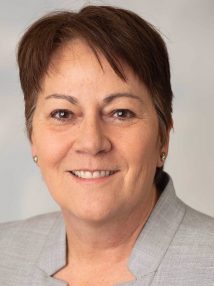Spring 2022 Texas Geosciences
Peering Under the Glacier
It’s the front line of climate change and could hold the key to predicting global sea level rise, but what goes on at the underwater face of Greenland’s glaciers is a mystery to science.
That could change in 2023 with a bold new mission led by researchers at The University of Texas at Austin that will explore three of Greenland’s glaciers with a submersible robot. The voyage will be the first time Greenland’s glaciers — which make up the world’s second-largest ice sheet — will be seen up close underwater.
Engineered to survive ice-covered seas by project partner the Woods Hole Oceanographic Institution (WHOI), the remotely operated vehicle Nereid Under Ice (NUI) will brave icebergs and riptides to approach within feet of the glaciers and return with data and samples from their underwater environment.
The scientists’ primary focus is not glacial ice, but the natural sand walls — or moraines — that buttress the glaciers and are thought to naturally, but precariously, stabilize...
Cities Swell Storms
Urban centers boosted rain during Europe’s deadly summer floods.
Earthquake Lightning Rod
Big data imaging shows rock’s big role in channeling earthquakes in Japan.
Interactive Shale Play Map
New portal reveals key information on nation’s shale gas and tight oil plays.
Research Highlights
Following Flood Water
Overlooked channels influence water flow and flooding along Gulf Coast.
Martian Mirage
Hope for present-day Martian groundwater dries up.
Global Early Warning System
Century-old technology inspires tsunami and earthquake alarm project.
Leaping Lizards! (Sort of)
World’s largest pterosaur jumped aloft to fly.
Fossilized by Climate Change
Well-preserved fossils could be consequence of past global climate change.
Maximizing Africa’s Aquifers
Tapping into groundwater can help communities in Africa diversify their water supply and strengthen their drought defenses, according to a study led by The University of Texas at Austin.
Looking for Life
On Jupiter’s moon Europa, ‘chaos terrains’ could be shuttling oxygen to ocean.
Student Research
Solving a Tectonics Mystery
UT graduate student catches Earth in act of forming new subduction zone.
Drilling it Forward
Hydrogeology students at the Jackson School learn from one of their own.
Deep-Diving Science
When the coronavirus brought travel to a halt, Professor Bayani Cardenas and his research team took his deep-diving science to Lake Travis.
Dean's Welcome
Welcome to Texas Geosciences, from Dean Claudia Mora
Friends,

There has never been a more exciting or challenging time to be a geoscientist. Whether you are interested in tackling climate change, natural hazards, the energy transition or many of the other grand challenges facing society, there is no denying that the world needs our expertise. Or, as we are fond of saying: The world needs geoscientists!
We were honored to be ranked No. 1 again in geology by the recent U.S. News & World Report rankings, as well as No. 4 in geophysics and seismology, No. 4 in paleontology, and No. 6 in overall Earth sciences. I am extremely proud of the faculty, researchers, students and staff at the Jackson School of Geosciences that made this possible.
As valuable as the geosciences are to society, the Jackson School, like other geosciences programs throughout the country, is going through a bit of an identity crisis at the moment. Most people don’t really understand what the geosciences are and we are working hard to communicate that we are more than a school for rock hounds and oil and gas professionals (both of which we love, by the way).
The unique skills geoscientists bring to the plate – such as the ability to work with massive data sets and supercomputing coupled with a holistic understanding of the Earth’s systems – are on full display in this issue of Texas Geosciences. A few good examples are:
- The amazing reconstruction of a mountain-size pluton under Japan that is channeling massive tsunami-generating earthquakes;
- An upcoming mission to deploy a robotic submarine to study underwater glacial walls in Greenland and how they are reacting to the warming planet;
- The discovery that liquid water under the south pole of Mars is likely just a mirage; and,
- The remarkable work to decouple the effects of urban environments on storms from the effects of climate change, an effort that could help inform how to build cities in a way that reduces their vulnerability to extreme weather.
Here at the Jackson School, we have more than 400 students, 50 faculty members, 125 research scientists and 150 research and administrative staff spread across three research units working on projects like these every day. If you have friends, students or colleagues that might be interested in this type of work, please pass these stories on. We are always looking for collaborators and students who want to help make a meaningful and positive impact on the planet.
I hope you enjoy Texas Geosciences!
Thank you,
Claudia Mora, Dean
